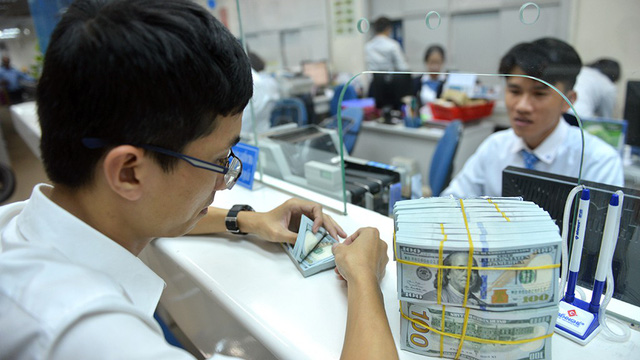Vietnam’s foreign exchange reserves reached a record high of US$52 billion in 2017, which the National Financial Supervisory Commission believes will boost trust from potential local and foreign investors and open up new growth opportunities for the country.
Such hefty foreign reserves, coupled with Vietnam’s policy of limiting its dependence on gold and U.S. dollars, have kept foreign exchange rates stable and given a jolt of energy to the local stock and real estate markets.
During the Vietnamese stock market’s second trading session of 2018 on Wednesday, the country’s benchmark VN-Index broke the 1,000-point threshold, closing up 0.99 percent with 1,005.67 points, its highest close since November 9, 2007.
New growth momentum
Truong Van Phuoc, acting chairman of the National Financial Supervisory Commission, said the $52 billion in foreign reserves has boosted faith in Vietnam from domestic and foreign investors.
“Low inflation and a stable foreign exchange rate stemming from high foreign reserves are two key indicators of a nation’s macroeconomic stability,” Phuoc told Tuoi Tre (Youth) newspaper.
Simply speaking, foreign reserves are assets held by a nation in foreign currencies to cover its international payments.
 |
| A woman counts U.S dollars at a bank in Ho Chi Minh City. Photo: Tuoi Tre |
According to a standard set by the International Monetary Fund, if a country's reserves are sufficient to cover at least 12 weeks of projected imports of goods and services, it is considered to hold a sufficient international payment capacity.
“[Vietnam] exceeded this international benchmark in 2017 with total reserves able to cover 13 weeks of imports,” Phuoc underlined.
The country logged a $2.7 billion trade surplus last year, with exports jumping 21 percent from a year prior.
This positive trade balance plus a total influx of $8 billion in remittances and rising foreign investment have allowed the State Bank of Vietnam, which is the country's central bank, to purchase foreign currencies allowing the addition of more than $12 billion to its total reserves, according to Phuoc.
De-dollarization effort pays off
In his interview with Tuoi Tre, Phuoc discussed several of Vietnam’s economic policies, most notably its efforts to de-dollarize the economy.
“We have consistently pursued a de-dollarization policy for nearly 20 years and it has so far yielded multiple significant successes,” he said.
 |
| A woman counts U.S dollars at a bank in Ho Chi Minh City. Photo: Tuoi Tre |
Since 2015, the central bank has stipulated a zero percent interest rate for savings in U.S. dollars for both individual and corporate clients in order to support its anti-dollarization efforts.
Commenting on the policy, Phuoc said it is a good move by the central bank as it helps strengthen the Vietnamese dong “not only as a means of payment but also as a reserve currency.”
“I am convinced the zero percent interest rate for dollar savings is appropriate for now,” he said.
“But that does not necessarily mean it should stay that way forever.
“We need to keep an eye on the development of the global economy and be flexible in our policymaking.”
The U.S. Federal Reserve increased its benchmark interest rate three times last year and is expected to hike the rate for the same number of times this year, prompting calls for the Vietnamese central bank to issue a similar rate hike.
However, the State Bank of Vietnam has maintained its zero percent interest and the dong only weakened a mere 1.3 percent against the greenback last year.
“Such forex management by the central bank in 2017 was critical for maintaining the competitiveness of Vietnamese exports and keeping depreciation within an acceptable range,” Phuoc said.
 |
| VND500,000 banknotes are seen on a counting machine at a bank in Ho Chi Minh City. Photo: Tuoi Tre |
The State Bank of Vietnam has also maintained a trading band of three percent for interbank dollar/dong transactions since August 2015. This means dollar/dong transactions can move to either side of the mid-point, set daily by the central bank, by no more than three percent.
With the official mid-point rate set at 22,407 dong to the dollar for interbank transactions on Friday, the ceiling price for the greenback to be traded in Vietnam is VND23,070 a dollar while the floor is VND21,734.
The U.S. FED is expected to increase its benchmark interest rate three times this year, but Phuoc said these adjustments will add little strength to, and could even potentially weaken, the dollar against other currencies.
“On these grounds, I predict that the dong will depreciate by 1.5-2 percent against the dollar in 2018, which is still acceptable,” he concluded.
Like us on Facebook or follow us on Twitter to get the latest news about Vietnam!


















































